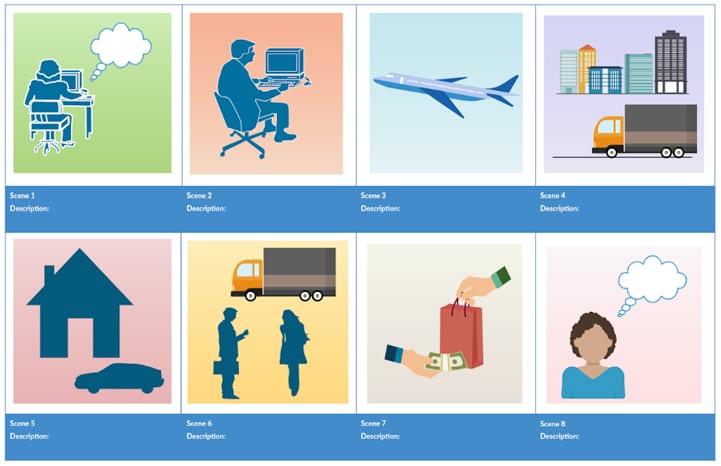

Video production process how to#
👉 If you want to learn more about this topic, be sure to read our article on how to choose a voiceover artist. The second one would be sourcing a V/O artist on such platforms as Fiverr or Bunny Studio (if you are going to produce courses for a global audience). The first one would be to turn to a local studio that will select a candidate based on your requirements (a perfect option for those projects developed for local markets only). The voiceover artist is chosen based on the preferable timbre of voice, age, gender, emotional tone, and even language accent.īasically, there are two methods for finding a voiceover artist for your project. Once the narration text is agreed on, production teams normally proceed to recording a voiceover. For example, for educational videos, scripts are being developed in this stage - they contain narration text and visual descriptions of scenes. This is the final step of the pre production stage, during which instructional designers produce final scripts, break down an educational course into several sections, and complement them with all the necessary descriptions and visual references: videos, images, tests, diagrams, tables, etc. 📌 Scripting + Technical task for media elements 👉 The format of the online course content may be as follows:

So, basically, you form a structure, outline all the information from subject matter experts in blocks, and choose the format of content for each block. The main goal of instructional design is to help you understand HOW and by WHAT MEANS the educational content will be delivered to the target audience. everything that you want a video course to convey. All the definitions, messages, statistical and research data, infographics, etc. This is one of the most important stages of educational video production as, here, you gather all the information that will serve as the foundation for your project. 📌 Gathering information from subject matter experts

📌 Formulating methods of evaluationĪfter you’ve determined course objectives and planned the outcome, it’s high time to figure out HOW YOU KNOW IF OBJECTIVES ARE ACTUALLY MET. You need to put together all the methods and techniques you will use to measure the goal accomplishment. In this stage, you go deeper into the subject research and, thus, need more information to be gathered. Now comes the second part of the pre-production process. VIDEO PRODUCTION PROCESS FOR EDUCATION - PREPARATION STAGE these all are different knowledge levels to which a course should be adjusted for, accordingly. The educational course may briefly introduce learners to the subject, or may provide them with tools to complete a particular task, cope with a problem, teach certain skills etc. This refers to the level of understanding that your course should provide to the target audience. 📌 Depth of subject knowledge and/or skills Thus, your goal is to produce educational content to pass this new knowledge on to your team (or target audience). Maybe you want to improve the efficiency of a particular department - let’s say, you’ve discovered that a particular task devours a great deal of your teams’ time and you have figured out how to reduce the task completion time. Maybe you want to create an easy onboarding process for new employees, introduce them to the company’s structure, or inform them on internal policies.

👉 What do we want to achieve with this course? Here, you should ask yourself one single question: The educational video development process actually begins with identifying project needs, depth of subject knowledge, and project outcomes. So, you want to know - what are the steps in video production for education? The development of a video course starts long before a script writer grabs a pen or an artist starts drawing sketches. EDUCATIONAL VIDEO PRODUCTION PROCESS - PROJECT OUTLINE


 0 kommentar(er)
0 kommentar(er)
